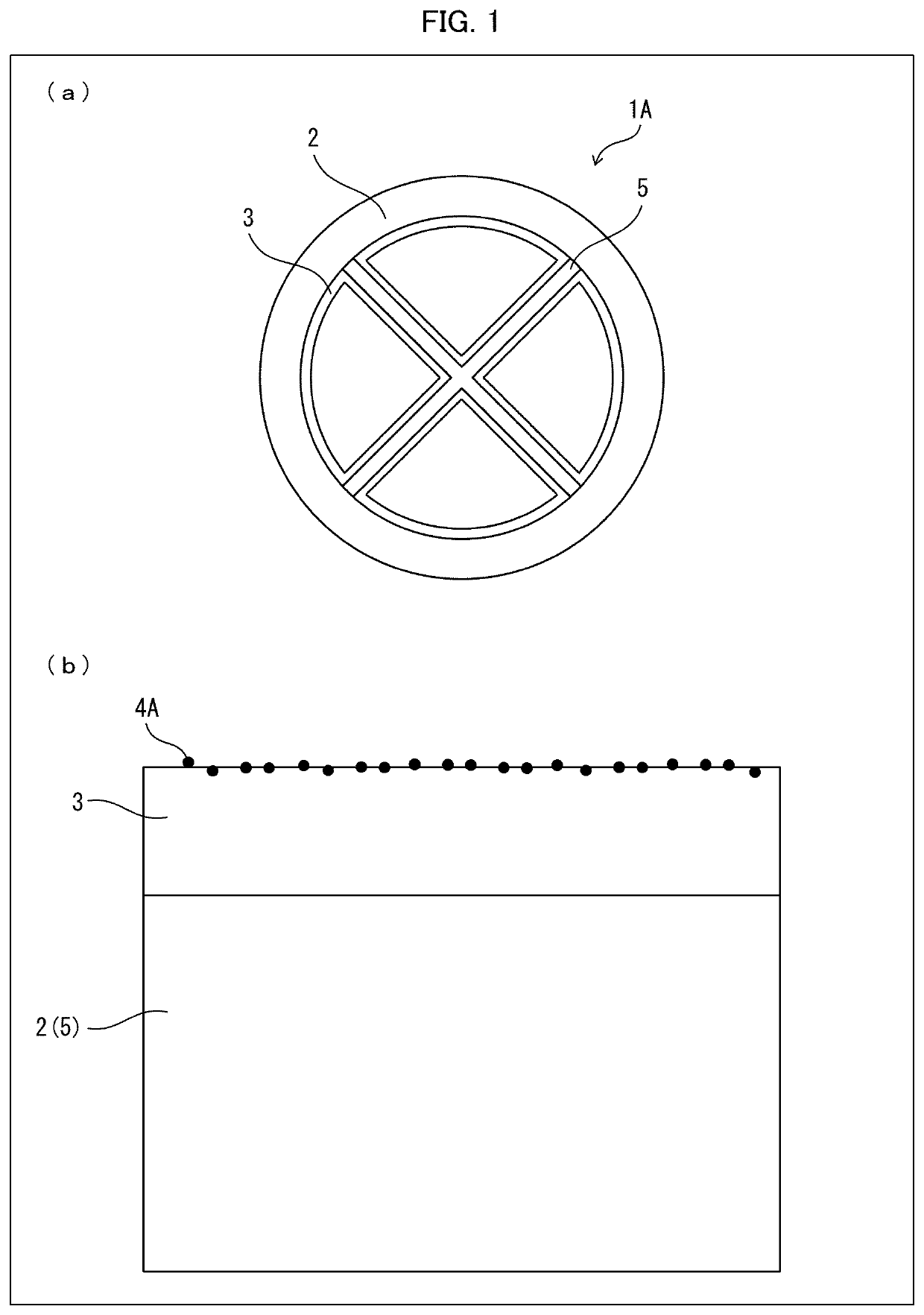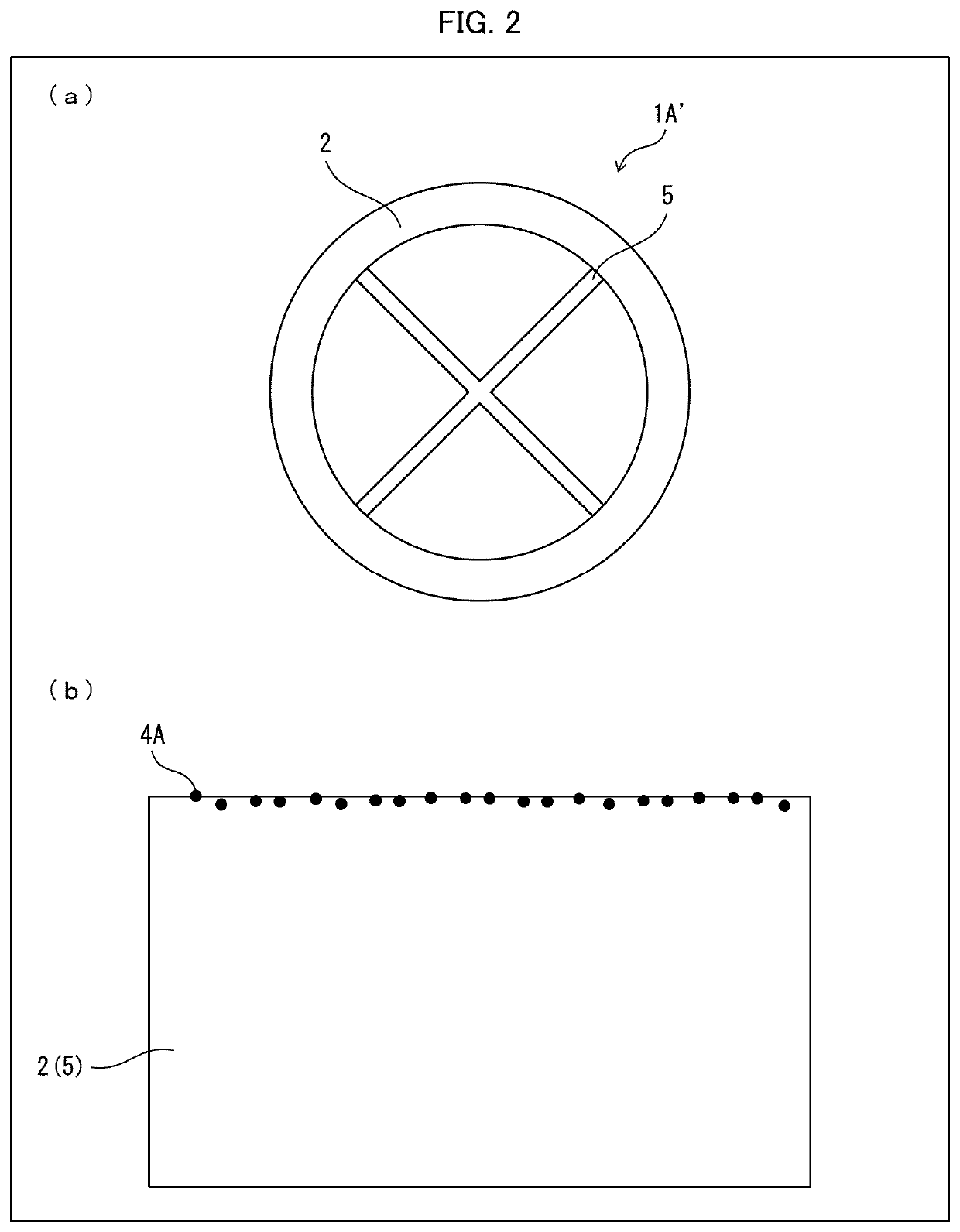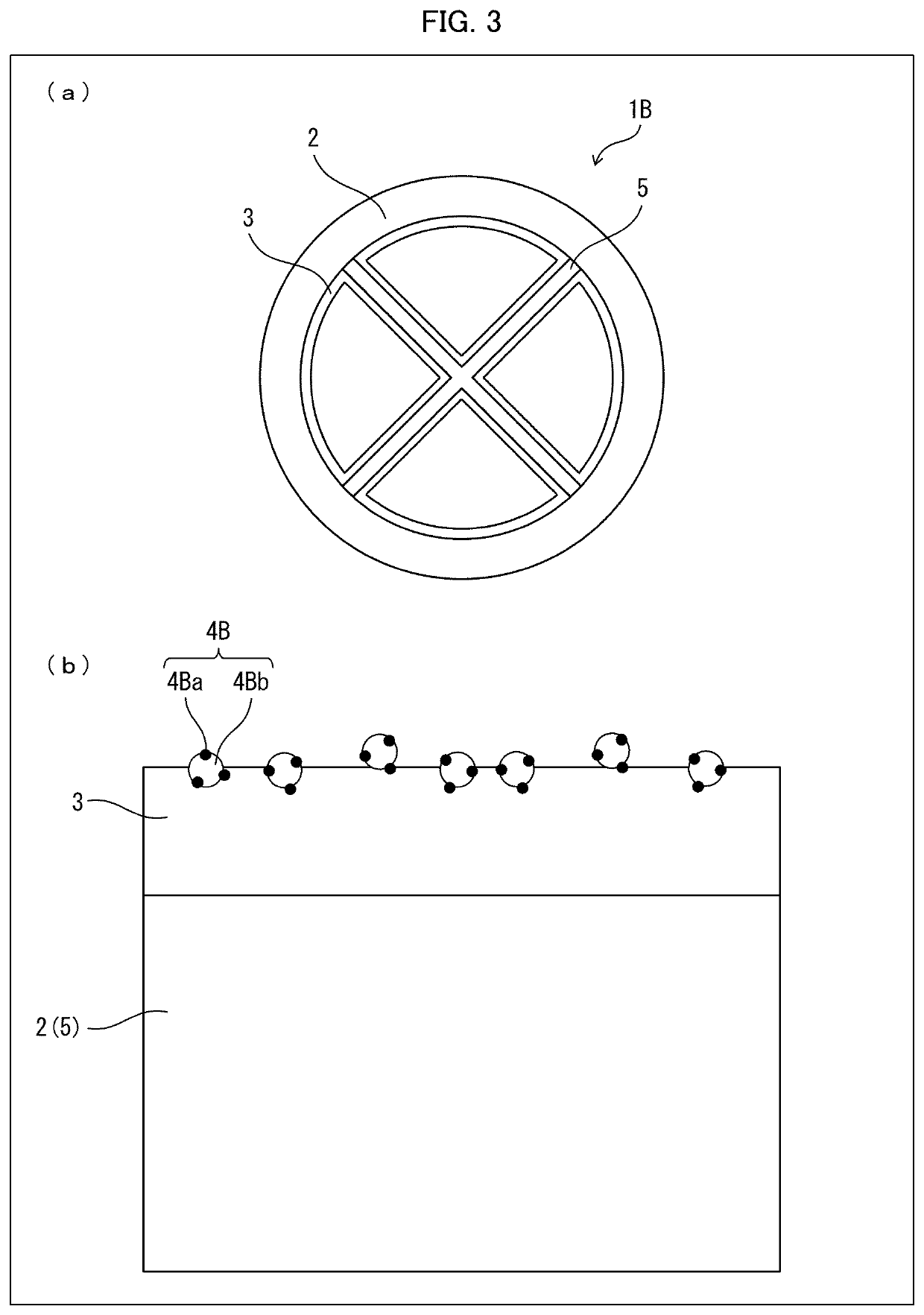Dehydrogenation catalyst
a technology of dehydrogenation catalyst and catalyst, which is applied in the direction of physical/chemical process catalyst, metal/metal-oxide/metal-hydroxide catalyst, bulk chemical production, etc., to achieve the effect of improving the yield of an olefin and preventing or reducing coking
- Summary
- Abstract
- Description
- Claims
- Application Information
AI Technical Summary
Benefits of technology
Problems solved by technology
Method used
Image
Examples
embodiment 1
[0020]The following description will discuss details of a pyrolysis tube 1A for production of an olefin in accordance with Embodiment 1 of the present invention with reference to FIG. 1. FIG. 1 illustrates a configuration of the pyrolysis tube 1A in accordance with Embodiment 1, in which (a) of FIG. 1 is a cross-sectional view schematically illustrating the pyrolysis tube 1A, and (b) of FIG. 1 is an enlarged view illustrating an inner surface of the pyrolysis tube 1A illustrated in (a) of FIG. 1.
[0021]As illustrated in (a) and (b) of FIG. 1, the pyrolysis tube 1A in accordance with Embodiment 1 includes: a tubular base material 2 made of a heat resistant metal material; a plate-shaped member (insert material) 5 made of a heat resistant metal material; an alumina layer 3 which is a metal oxide layer containing Al2O3 and which is provided on an inner surface of the tubular base material 2 and on surfaces of the plate-shaped member (insert material) 5; and particles of a dehydrogenatin...
modification example
[0080]The following description will discuss a pyrolysis tube 1A′, which is a modification example of the pyrolysis tube 1A in Embodiment 1, with reference to FIG. 2. FIG. 2 illustrates a configuration of the pyrolysis tube 1A′, in which (a) of FIG. 2 is a cross-sectional view schematically illustrating the pyrolysis tube 1A′, and (b) of FIG. 2 is an enlarged view illustrating an inner surface of the pyrolysis tube 1A′ illustrated in (a) of FIG. 2.
[0081]The pyrolysis tube 1A in accordance with Embodiment 1 is configured such that the alumina layer 3 which is a metal oxide layer containing Al2O3 is provided on the inner surface of the base material 2 and the surfaces of the plate-shaped member 5 and that the dehydrogenating catalyst 4A is supported on the surface of the alumina layer 3. The pyrolysis tube 1A′, which is a modification example, is different from the pyrolysis tube 1A in that the dehydrogenating catalyst 4A is directly supported on the inner surface of the tubular base ...
embodiment 2
[0084]The following description will discuss another embodiment of the present invention. For convenience of explanation, the same reference numerals are given to constituent members which have functions identical with those described in Embodiment 1, and descriptions regarding such constituent members are omitted.
[0085]In a pyrolysis tube 1B for production of an olefin in accordance with Embodiment 2, a dehydrogenating catalyst has a configuration different from that of the dehydrogenating catalyst 4A in Embodiment 1.
[0086](Dehydrogenating Catalyst 4B)
[0087]The following description will discuss details of the pyrolysis tube 1B in accordance with Embodiment 2 of the present invention with reference to FIG. 3. FIG. 3 illustrates a configuration of the pyrolysis tube 1B in accordance with Embodiment 2, in which (a) of FIG. 3 is a cross-sectional view schematically illustrating the pyrolysis tube 1B, and (b) of FIG. 3 is an enlarged view illustrating an inner surface of the pyrolysis ...
PUM
| Property | Measurement | Unit |
|---|---|---|
| specific surface area | aaaaa | aaaaa |
| crystallite size | aaaaa | aaaaa |
| temperature | aaaaa | aaaaa |
Abstract
Description
Claims
Application Information
 Login to View More
Login to View More - R&D
- Intellectual Property
- Life Sciences
- Materials
- Tech Scout
- Unparalleled Data Quality
- Higher Quality Content
- 60% Fewer Hallucinations
Browse by: Latest US Patents, China's latest patents, Technical Efficacy Thesaurus, Application Domain, Technology Topic, Popular Technical Reports.
© 2025 PatSnap. All rights reserved.Legal|Privacy policy|Modern Slavery Act Transparency Statement|Sitemap|About US| Contact US: help@patsnap.com



